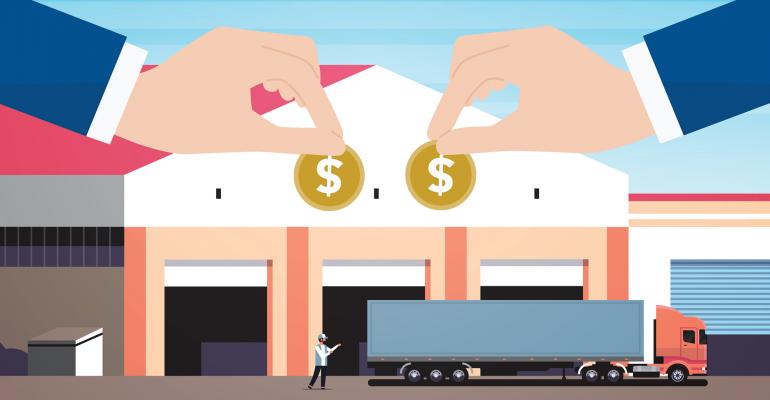While all types of industrial real estate continue to rank highly on many acquisition wish lists, there has been a particular uptick in the demand for big-box industrial assets. Today, all types of investors are looking at industrial big boxes—warehouse/distribution centers that contain 200,000 sq. ft of space or more of space—including domestic and foreign pension funds, public and non-traded REITs, sovereign wealth funds, private equity funds, family offices and high-net-worth individuals (HNWIs), according to Jack Fraker, vice chairman and managing director of capital markets with real estate services firm CBRE.
Among the most active big-name bidders on industrial assets today are Link, GIC, PGIM, Clarion, Stockbridge, KKR, Exeter and Brookfield, notes Al Pontius, senior vice president with Marcus & Millichap who is based in the firm’s San Francisco office. “But this is only the beginning,” he adds. “An important caveat is that there continue to be new equity sources added to the mix that are expanding an already crowded field.”
For example, in April, GID, an integrated real estate company that has been investing in industrial assets for more than three decades, partnered with Ivanhoe Cambridge to form a new $2-billion investment platform, GID Industrial, that is focusing on acquiring, developing and managing industrial assets of 250,000 sq. ft. and smaller in infill locations. GID is looking for properties “near dense residential and employment nodes in close proximity to the end customer,” according to the press release announcing the venture.
Meanwhile, in June, Arizona State Retirement System (ASRS) made a $500 million equity commitment to industrial real estate investor and developer Westcore. When combined with a previous capital commitment from ASRS and two life insurance firms, Westcore has now amassed $1.3 billion in institutional equity to fund new acquisitions and development. The company has been investing in a wide range of industrial assets, including big boxes.
Newly completed industrial big boxes are a very popular product type among such buyers because they feature all the amenities tenants currently find the most attractive—clear stacking height, super flat floors to accommodate forklifts, wide column widths for easy maneuvering inside the property and ample track aprons for tractor trailers, Fraker says. And investors are willing to pay high prices because they know rents will continue to grow over their hold periods and generate attractive yields, he notes.
Big-box fundamentals
Due to the continued growth in online shopping, tenants’ demand for industrial big boxes is incredibly strong and is forecast to continue for some time to come. “This is putting strong upward pressure on rents and downward pressure on cap rates,” he notes. “Furthermore, construction costs have been rising at the highest rate in many years, so added cost pressures on new supply [are] providing additional price support for existing product.”
The North American industrial and logistics market had its strongest year on record in 2020. All types of industrial assets performed well, but none more so than big boxes, according to a recent report from CBRE. Leases for industrial buildings ranging from 200,000 to 500,000 sq. ft. totaled almost 159 million sq. ft. last year, above the 150.6 million sq. ft. recorded for these types of assets in 2019 and significantly above industrial facilities larger than 500,000 sq. ft.
Over the course of last year, direct vacancy in the industrial big box category dropped by 60 basis points, to 4.4 percent, and overall net absorption rose from roughly 53.8 million sq. ft. to 71.8 million sq. ft., CBRE researchers estimate. First year rents also rose, from $5.24 to $5.51 per sq. ft.
Where are the values?
These fundamentals have led to record low cap rates. Fraker notes that cap rates on industrial big boxes are now below 5.0 percent throughout the U.S., but are even lower in major markets like Los Angeles, Chicago, Atlanta, Dallas-Fort Worth, New Jersey and Eastern Pennsylvania’s I-78/I-81 Corridor.
Pontius says that investors’ return expectations vary by deal composition, building vintage and site characteristics, but the unlevered internal rate of return target is about 5.0 percent for quality product. If existing rent at industrial big boxes in major markets is below the prevailing rate, cap rates can be in the low 3-percent range.
For functional, modern product in primary and major secondary markets, cap rates range between 3.2 percent and 4.7 percent, according to Pontius. And they are tightening. “Given this condition, with the wild card being the interest rate environment, cap rates can be expected to compress on average for several quarters as investors ‘pay forward’ to a degree for existing rents that are measurably below market rates,” he adds, noting that the bottom on cap rates may not drop much further, but the upper limit of the range will likely come down.





